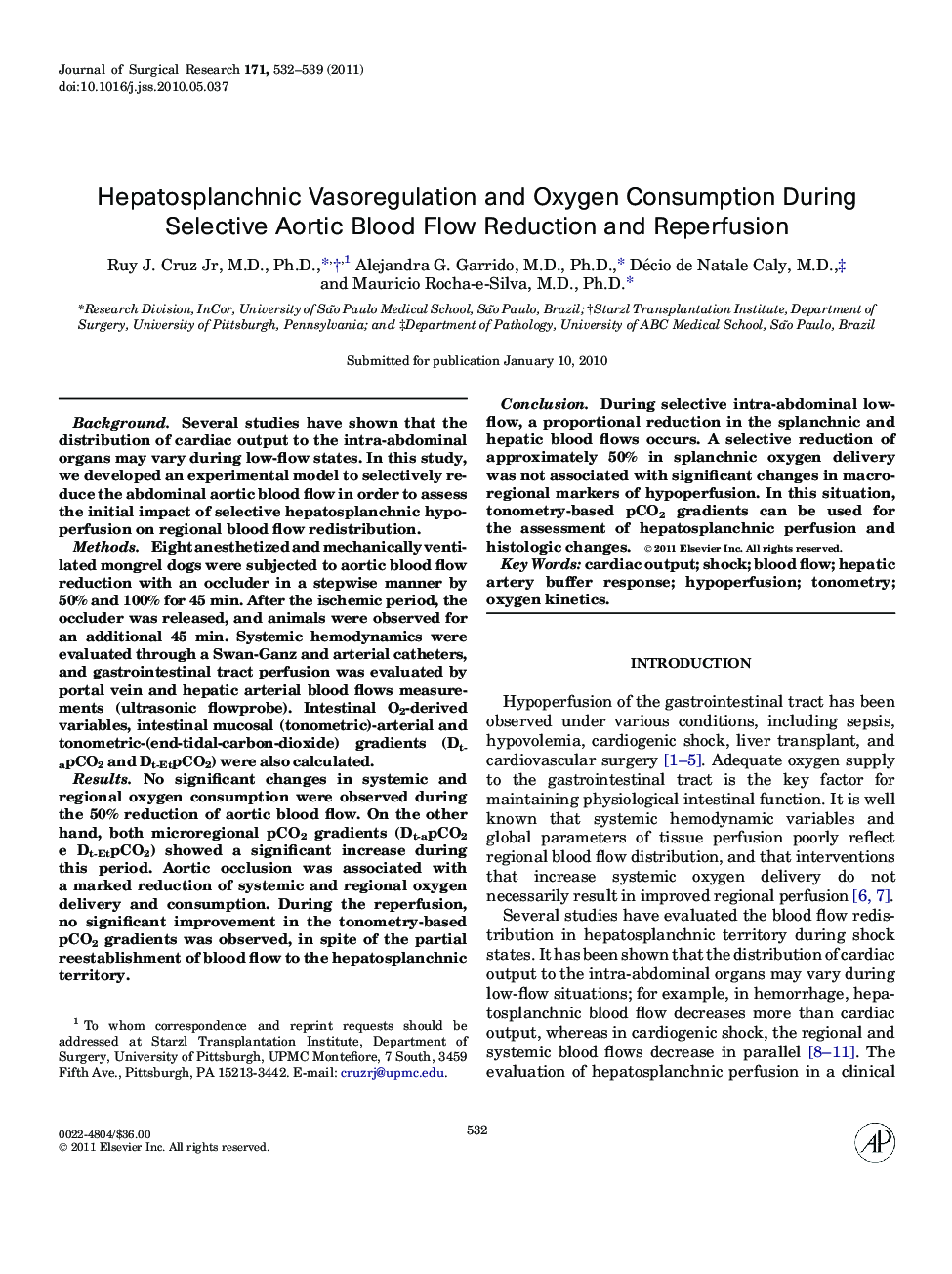| کد مقاله | کد نشریه | سال انتشار | مقاله انگلیسی | نسخه تمام متن |
|---|---|---|---|---|
| 4301845 | 1288444 | 2011 | 8 صفحه PDF | دانلود رایگان |

BackgroundSeveral studies have shown that the distribution of cardiac output to the intra-abdominal organs may vary during low-flow states. In this study, we developed an experimental model to selectively reduce the abdominal aortic blood flow in order to assess the initial impact of selective hepatosplanchnic hypoperfusion on regional blood flow redistribution.MethodsEight anesthetized and mechanically ventilated mongrel dogs were subjected to aortic blood flow reduction with an occluder in a stepwise manner by 50% and 100% for 45 min. After the ischemic period, the occluder was released, and animals were observed for an additional 45 min. Systemic hemodynamics were evaluated through a Swan-Ganz and arterial catheters, and gastrointestinal tract perfusion was evaluated by portal vein and hepatic arterial blood flows measurements (ultrasonic flowprobe). Intestinal O2-derived variables, intestinal mucosal (tonometric)-arterial and tonometric-(end-tidal-carbon-dioxide) gradients (Dt-apCO2 and Dt-EtpCO2) were also calculated.ResultsNo significant changes in systemic and regional oxygen consumption were observed during the 50% reduction of aortic blood flow. On the other hand, both microregional pCO2 gradients (Dt-apCO2 e Dt-EtpCO2) showed a significant increase during this period. Aortic occlusion was associated with a marked reduction of systemic and regional oxygen delivery and consumption. During the reperfusion, no significant improvement in the tonometry-based pCO2 gradients was observed, in spite of the partial reestablishment of blood flow to the hepatosplanchnic territory.ConclusionDuring selective intra-abdominal low-flow, a proportional reduction in the splanchnic and hepatic blood flows occurs. A selective reduction of approximately 50% in splanchnic oxygen delivery was not associated with significant changes in macroregional markers of hypoperfusion. In this situation, tonometry-based pCO2 gradients can be used for the assessment of hepatosplanchnic perfusion and histologic changes.
Journal: Journal of Surgical Research - Volume 171, Issue 2, December 2011, Pages 532–539